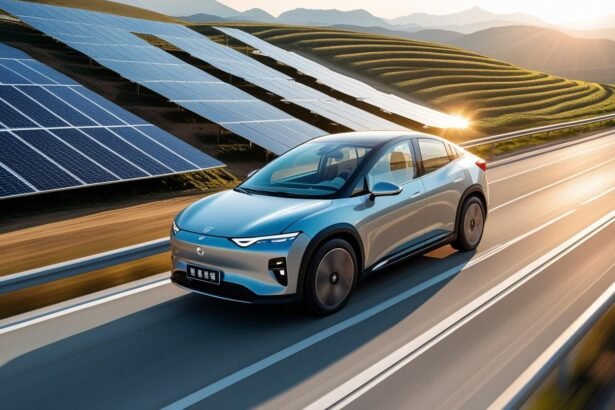The urgent need to combat climate change has propelled “green energy” to the forefront of global efforts. From solar panels and wind turbines to electric vehicles and smart grids, these innovations promise a future powered by clean, sustainable resources. However, while the overarching goal of green technology is to protect the planet, a deeper examination reveals a complex and often overlooked reality: the rapid expansion of green energy infrastructure and the extraction of raw materials for its components pose significant, and in some cases, destructive, threats to the animal kingdom. The very solutions designed to save our world could inadvertently contribute to the decline of biodiversity if not implemented with extreme caution and foresight.

The Mechanisms of Destruction: How Green Tech Impacts Wildlife
The impact of green technology on the animal kingdom is multi-faceted, often stemming from the sheer scale and physical footprint of these technologies:
1. Habitat Loss and Fragmentation
The most direct and widespread impact comes from the physical space required for green energy installations. Vast solar farms necessitate clearing large tracts of land, often in desert or semi-arid ecosystems, destroying habitats for reptiles, rodents, and ground-nesting birds. Wind farms, while appearing less impactful individually, require significant land for access roads, substations, and transmission lines, leading to habitat fragmentation that disrupts wildlife corridors and isolates populations. Hydroelectric dams, a long-standing source of green energy, flood extensive areas, submerging forests and displacing countless species, while also altering river flows crucial for aquatic life and migratory fish.
2. Direct Mortalities
Wind turbines are notorious for causing bird and bat fatalities, particularly for migratory species. While research is ongoing to mitigate these impacts through detection systems and turbine shutdown protocols, the sheer number of turbines being erected globally means that even a low per-turbine mortality rate can sum up to significant numbers. Solar thermal plants, which concentrate sunlight to generate heat, have been observed to “incinerate” birds that fly through their concentrated energy beams.
3. Resource Extraction and Pollution
The backbone of green energy technologies relies heavily on critical minerals like lithium, cobalt, nickel, and rare earth elements. The mining of these materials, often concentrated in ecologically sensitive areas of the world (e.g., lithium in the salt flats of South America, cobalt in the Democratic Republic of Congo), leads to extensive habitat destruction, deforestation, soil erosion, and water pollution. Tailings ponds from these mines can contaminate water sources essential for wildlife, and the processes themselves are energy-intensive, creating a paradoxical burden that undermines the “green” label if not managed responsibly.

4. Noise and Light Pollution
Construction and operation of green energy facilities can generate significant noise, disrupting animal communication, breeding patterns, and migration routes. Light pollution from large solar farms or operational wind farms can disorient nocturnal animals, particularly migratory birds and insects.
5. Disruption of Ecosystem Services
Changes in land use for green energy infrastructure can disrupt vital ecosystem services, such as pollination, water filtration, and pest control, which are provided by a healthy animal kingdom. The cumulative effect of these disruptions can weaken ecosystems' resilience to other environmental stressors.
AI-Powered Green Tech Solutions: A New Frontier, New Risks?
The integration of AI into green energy solutions promises greater efficiency and optimization. AI can manage smart grids, predict energy demand, and even optimize the placement and operation of wind turbines to reduce bird strikes. However, the development and operation of AI systems themselves have an environmental footprint, requiring vast amounts of data storage and processing power, which consume energy. While AI can improve the efficiency of green energy systems, its own environmental impact, if not carefully managed, could add another layer of demand on resources and potentially push for even larger-scale infrastructure development.
Electric Vehicle Purchase: The Lithium Conundrum
The push for widespread electric vehicle purchase is a cornerstone of global decarbonization strategies. While EVs eliminate tailpipe emissions, the environmental cost of their batteries, particularly the mining of lithium and cobalt, is a significant concern. The expansion of lithium mining, for instance, often occurs in arid regions, depleting scarce water resources and destroying unique ecosystems like the high-altitude salt flats of the Andes, which are crucial habitats for flamingos and other endemic species. The demand for green energy in transport will continue to grow, putting immense pressure on these environments.

Best Green Tech Solutions vs. Unintended Consequences
Defining the “best” green energy solutions becomes complex when considering biodiversity. While solar and wind are generally favored over fossil fuels, their deployment must be strategically planned. Off-shore wind farms, for example, avoid terrestrial habitat destruction but can pose risks to marine life through noise pollution during construction and potential entanglement for large marine mammals. Geothermal energy, while having a small footprint, can sometimes lead to localized ground subsidence or the release of subterranean gases. The pursuit of green energy necessitates a holistic assessment of environmental impact.

Siemens Green Technology: A Corporate Example
Large corporations like Siemens are heavily invested in green energy solutions, from wind turbines to smart grid technologies. While their contributions are vital for scaling up renewable energy, the sheer industrial scale of their operations means that even with best practices, the cumulative impact on the environment, including resource extraction and manufacturing processes, is substantial. Companies involved in green energy need to demonstrate robust environmental stewardship throughout their entire supply chain to genuinely live up to their “green” credentials.

Australia Renewable Energy: A Case Study
Australia, with its vast landmass and abundant sunshine and wind, is a prime candidate for renewable energy expansion. The country has ambitious targets for green energy generation. However, this expansion often takes place in sensitive ecosystems, threatening unique Australian wildlife. For example, large-scale solar and wind projects in the outback can impact iconic species like the Australian bustard and various raptors, which are particularly vulnerable to habitat disruption and turbine collisions. The drive for green energy in Australia highlights the tension between ambitious climate targets and the imperative to protect the nation's rich biodiversity.

Conclusion: A Balanced Path for Green Energy
While green energy is essential to mitigating climate change, it is not without its own environmental footprint. The narrative that green energy inherently saves the animal kingdom, while largely true in its long-term climate benefits, overlooks the immediate and significant destructive impacts of its widespread deployment. To truly protect the animal kingdom, the expansion of green energy must be approached with an unyielding commitment to:
- Strategic Siting: Prioritizing degraded lands and avoiding critical habitats for green energy installations.
- Eco-friendly Design: Developing technologies that minimize impacts on wildlife (e.g., bird-friendly turbine designs, less invasive solar arrays).
- Sustainable Resource Management: Implementing ethical and environmentally responsible mining practices for critical minerals, including recycling programs for green energy components.
- Robust Environmental Impact Assessments: Conducting thorough and independent assessments before project approval, with provisions for adaptive management.
- Investment in Biodiversity Offsets: Where unavoidable impacts occur, robust and effective offset programs must be implemented to create or restore equivalent habitats.
Without these critical considerations, the very green energy solutions we rely on to save our planet could inadvertently contribute to the further destruction of the animal kingdom, creating a bitter irony in our fight against climate change. The future of green energy must be one that not only decarbonizes our economy but also actively protects and restores the delicate balance of life on Earth.









